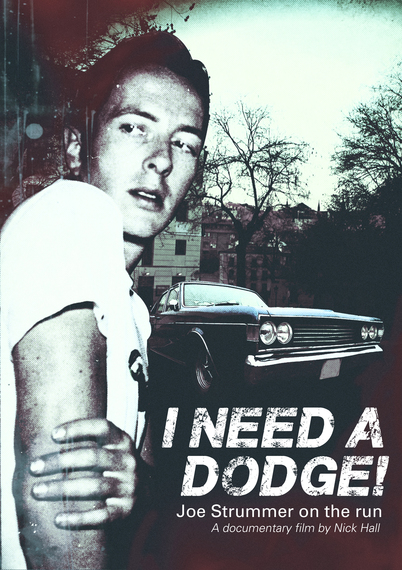Bands have a tendency to implode, particularly after mega success. It took five years for the furore surrounding The Clash, the quintessential English punk band that married rebellion and rock & roll on their breakthrough LP London Calling, to die down and the infighting and disintegration to take hold. The year is 1984. The group's original line-up had been trashed and The Clash mark 2 ran aground. Lead singer Joe Strummer fled London. Very little is known about where he went.
A new documentary, I Need a Dodge! Joe Strummer on the Run, part hilarious road romp and therapist's couch, unravels the one of British punk's long-standing mysteries. Recorded interviews with Strummer, his friends, lovers and fellow musicians intermixed with archival Clash footage, never before seen private photographs, Spanish punk memorabilia and car commercials capture the time. The film also reveals the downside of a life as celebrated as Strummer's. He never glossed over the fact of why he was hiding in Granada. He admitted he had come to 'learn ... understand [and] feel the pain of all the mistakes of the past'.
Psychologically it wasn't a great place to be. Strummer dishevelled and smelly, first showed up obsessively carrying a notebook filled with his hand-written lyrics in a Granada bar frequented by a local Spanish punk band, 091. He eventually befriended them, got them into a local studio and helped them get a recording contract with a major Spanish label, Zafiro, in Madrid. The only problem was that the Clash front man wasn't a producer used to working to a deadline and a budget. It was deal that went awry.
Unlike England, where punk had been a groundbreaking youth culture, a response to the country's traditionalism and conservatism, Spain was in the throes of its own political changes after the death of Franco. Punk was marginalised at best in a country still addicted to easy listening, much of it released by the label that was paying for the studio time. However there was enough of a punk music scene with bands like Radio Futura to somehow duplicate the life Strummer knew.
All he needed was a car and the one he wanted was another icon in automotive form, a flashy American Dodge-Dart that the Spanish company Barreiros produced with Chrysler. It could be interpreted as another example of rock star excess. Cars and rock & roll have always been the twin engines of popular music. But Strummer wanted the Dodge for almost spiritual reasons. As Radio Futura's singer Santiago Auserón explained, they had to keep looking up the word 'dodge' in the dictionary. In effect, Strummer was searching for some kind of evasionary tactic to redeem his life and start anew. He had gone to southern Spain because he had been introduced to the region's political history by a former girlfriend. His long-standing interest in the poet Frederico García Lorca and the Spanish civil war had already sparked The Clash classic, 'Spanish Bombs'. Now living in that country, he was intimately clued into the culture and even recognised the glamorous widow of the bullfighter Paquirri who had been gored to death in Cordoba in 1984.
The Dodge-Dart soon became another of the lead singer's obsessions. During this period, Gaby Holford, the mother of his children back in London, spent hours on the phone listening to him talk about it. Second hand, the pearl-coloured car, with it roof covered in black vinyl-covered, was one of those huge square American cars, with wings. It was too unwieldy to race through narrow Spanish city streets but on the highways it could fly like the wind. Once the Dodge was pulled over by Civil Guardia who were bribed with whatever change Strummer's Spanish buddies had and the British pounds in his pocket.
On camera Gaby is as astute about the volatile life of bands as she is about Strummer's state of mind. During that period, she was pregnant with their second daughter and made an ultimatum: if Strummer weren't present at the birth in London, he would never see his daughter. Early one morning she called Madrid and woke up someone to rouse Strummer passed out in another hotel room where he wasn't answering his phone. He took the next plane back, walked into a London hospital room and Gaby gave birth ten minutes later. In the excitement he totally forgot in which garage in Madrid he had left the Dodge Dart. On his return to the city he enlisted local radio and asked listeners to help him find it but to no avail. Some thirty years later, British filmmaker living in Barcelona Nick Hall solves one of rock & roll's persistent riddles about a missing lead singer and his car.
I Need a Dodge!, produced nearly twelve years after Strummer's premature death in 2002, is a documentary that wouldn't have been made without crowdfunding. The names of the film's Internet sponsors are the last credits on the screen. Hall and his supporters are not the only ones honouring the past. Last year, the city of Granada named a modest square Placeta Joe Strummer. Even the Dodge Dart has been experiencing less a resurgence and more of a makeover, of sorts. Its twin clutch six-speed gearbox has been installed in the new 4C Alfa Romeo sports car, which has the power and the roar that a man with Strummer's consuming passions would have adored.
